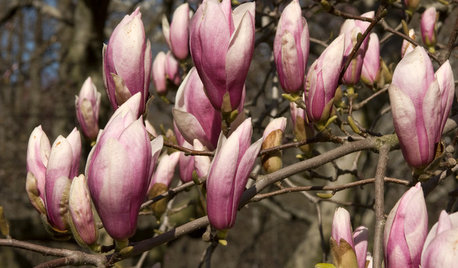best dormant oil to use
lycheeluva
12 years ago
Related Stories

ROCKY MOUNTAINS GARDENINGRocky Mountain Gardener's February Checklist
Get smart with your seeds, strike with oil to manage pests and practice proficient pruning — your trees and shrubs will thank you
Full Story0

LANDSCAPE DESIGNGreat Design Plant: Saucer Magnolia
Witness its glorious spectacle in early spring, but this specimen tree brings other delightful visuals to a garden too
Full Story
WINTER GARDENINGPruning Secrets for Exquisite Roses
Encourage gorgeous blooms year after year with this time-tested advice on how to prune your rosebush in winter for health and shape
Full Story
GARDENING GUIDESHow to Keep Your Citrus Trees Well Fed and Healthy
Ripe for some citrus fertilizer know-how? This mini guide will help your lemon, orange and grapefruit trees flourish
Full Story
SAVING WATER11 Ways to Save Water at Home
Whether you live in a drought-stricken area or just want to help preserve a precious resource, here are things you can do to use less water
Full Story
EDIBLE GARDENS12 Essential Herbs for Your Edible Garden
Make home cooking and drinks even better with herbs plucked from your own backyard or windowsill pot
Full Story
EARTH DAYThe Case for Losing the Traditional Lawn
Work less, help the environment and foster connections by just saying no to typical turf
Full Story
HOUZZ TOURSMy Houzz: Old-World Charm With a Modern-Love Twist
Heritage pieces combine with custom touches — and one great story — in a Canadian family's 'forever' house
Full Story
MOST POPULAR7 Ways to Design Your Kitchen to Help You Lose Weight
In his new book, Slim by Design, eating-behavior expert Brian Wansink shows us how to get our kitchens working better
Full Story
STORAGEBedroom Storage: 12 Ways to Work Your Wardrobe
Instead of letting the mess in your closet overwhelm you, tackle it head on with these smart and simple solutions
Full Story






mrsg47
Scott F Smith
Related Professionals
Ballwin Landscape Architects & Landscape Designers · Harvey Landscape Architects & Landscape Designers · Fort Worth Landscape Contractors · Hurricane Landscape Contractors · Mastic Beach Landscape Contractors · Mastic Beach Landscape Contractors · Oxnard Landscape Contractors · Pleasant Grove Landscape Contractors · Ponte Vedra Beach Landscape Contractors · Roseville Landscape Contractors · Selden Landscape Contractors · St. Louis Landscape Contractors · Tacoma Landscape Contractors · Tustin Landscape Contractors · Shafter Landscape ContractorslycheeluvaOriginal Author
thomis
Scott F Smith
armyofda12mnkeys
thomis
daemon2525
Scott F Smith
garedneck
jbclem
alan haigh
Scott F Smith
Scott F Smith
alan haigh
mrsg47
alan haigh
mrsg47
West Home